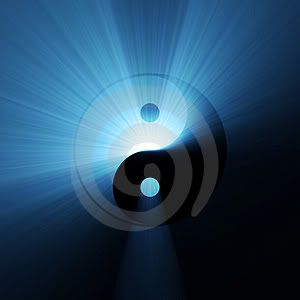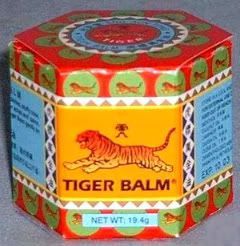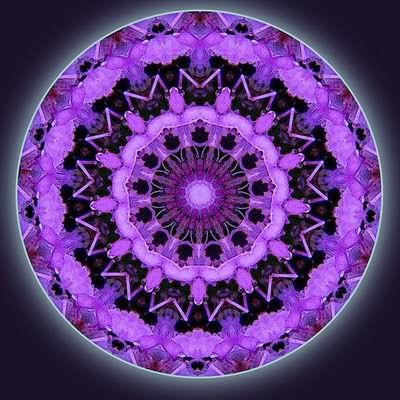( – promoted by buhdydharma )
Rarely is it all black and white. In my world…. it’s a lot of shades of gray.

Although innate dualities are certainly acknowledged across many philosophies, religions, cultures.
The yin and yang represent all the opposite principles one finds in the universe. Under yang are the principles of maleness, the sun, creation, heat, light, Heaven, dominance, and so on, and under yin are the principles of femaleness, the moon, completion, cold, darkness, material forms, submission, and so on. Each of these opposites produce the other: Heaven creates the ideas of things under yang, the earth produces their material forms under yin, and vice versa; creation occurs under the principle of yang, the completion of the created thing occurs under yin, and vice versa, and so on. This production of yin from yang and yang from yin occurs cyclically and constantly, so that no one principle continually dominates the other or determines the other. All opposites that one experiences-health and sickness, wealth and poverty, power and submission-can be explained in reference to the temporary dominance of one principle over the other. Since no one principle dominates eternally, that means that all conditions are subject to change into their opposites…
and seen in symbolism, imagery, and much deeper thought.

That this “duality” framing is illusion is accepted and known as well.
The power of “our mothers” are found in their creative powers and their powers within the realm of witchcraft where they are also referred to as witches (aje). The [Yoruba] Gelede festivals are not only held to honor the mothers but also to pacify them. This duality within the vital life force of women is expressed in terms like “one with two faces”, “one with two bodies” and “one of two colours” (Drewell:549). The “Iyalashe” is the head of the Gelede society and she has great power which extends into other cults. The power of the mothers are in their inner force and women who are able to maintain patience and self control are believed to possess more of this inner force.
The deity of the Gelede, Iyánlá, is described as cool and patient despite her destructive potential. The coolness does not refer to an inherent goodness of the deity but rather to a quiet inner strength. Opposite forces of male and female underlies the philosophy of the Gelede cult and the mothers are feared by both men and women because of their mystic powers. They are not able though to act out these powers and each mother must have a male counterpart to carry out her work.
The Efe/Gelede festival is characterized by song and dance performances with a variety of masks. Masks are worn on top of the heads of male dancers and they are clad in multicoloured cloths. The masks appear in pairs and are predominantly naturalistic in appearance. When these masks are not in use they are kept in a clubhouse of one of the members. Almost all Gelede masks consist of two basic units; the idealized human faces and a superstructure. Gelede masks are not meant to be seen in isolation and the masks together with the multicoloured cloths, dance steps and the ceremony form the complete artwork. Traditionally the Gelede performances take place in or near the market-place and the Iyánlá mask makes its appearance at night.
The Iyánlá mask represents the face of the “Great Mother” and is a sacred and mostly inaccessible mask. Great care is taken within the ritual to prevent anybody gazing on the face of the “Great Mother” and specific procedures accompanies the creation of the Iyánlá mask. It is the responsibility of the elders of the community to prepare the wood in which the mask is to be carved and an elaborate sacrificial ceremony is undertaken to ensure the success of the work. After the completion of the mask it is taken to a shrine for the application of certain medicines. The Iyánlá mask is characterized by a long flat extension below the face and the mask is considerably larger in size than any of the other Gelede masks. The largeness of the mask refers to the “inner force” of the “great mother” as this force is believed to reside inside the head. In performances a large white cloth, extending eight to ten yards in length (Drewal:561), is attached to the Iyánlá mask. During the course of the year contributions are made in money for the lengthening of the cloth. In this way the community participates in caring for the “great mother”. The extension on the mask below the chin is the mask’s most distinctive characterization and this extension is consistently identified as a beard. In Yoruba philosophy the beard is associated with elders and bearded women are believed to possess extraordinary spiritual power. The beard is also suggestive of the transformative powers of the mothers.
~from African Art – The Symbolic and Philosophical Importance of Duality in Yoruba Art
Then… there is the ever present, all inclusive circle.
CIRCLE (sun disc, sacred hoop, ring): An ancient and universal symbol of unity, wholeness, infinity, the goddess, female power, and the sun. To earth-centered religions throughout history as well as to many contemporary pagans, it represents the feminine spirit or force, the cosmos or a spiritualized Mother Earth, and a sacred space. (See next item) Gnostic traditions linked the unbroken circle to the “world serpent” forming a circle as it eats its own tail. (See serpent)
CIRCUMPUNCT – CIRCLE with DOT (BINDU) in the center: It represents the sun and a sun god (called Ra in Egypt), gold (as in alchemy), an (unbiblical) archangel (Kabbalah), emotional restraint (Freemasons), and the creative spark of divine consciousness within people linking everyone to the creative mind of a universal “god” thus making each persona “co-creator” (astrology). In the complex symbolic system of Hinduism and Buddhism, the bindu (dot) represents the male force. Together, the circle and the bindu symbolize the spiritual merging of male and female forces. (See Sun Sign and the above explanation for CIRCLE)
CIRCLE (quartered): The sacred circle filled with a cross, four equal lines pointing from the center to the spirits of the north, east, south, and west — or to the basic element: earth, water, air (or wind), and fire. In Native American traditions, it forms the basic pattern of the MEDICINE WHEEL and plays a vital part in major spiritual rituals. Many contemporary pagans consider it their main symbol for transmitting the energy of the goddess. (See sun wheel) Churches have used variations of the same popular shape, usually calling it the Celtic Cross.
And then sometimes, things are just way lots simpler than ya think. And y’just need a little balm for the blog. ‘Specially on Saturday’s.

…bring it.


10 comments
Skip to comment form
Author
or more balm…?
Author
for the bump…!
Well… that would explain the government and the two party system, yes?
Two of three grandsons will soon be on foodstamps. Septic backed up flooding the survival foodstock. Annual spiritual retreat/survivalist trip in severe financial trouble. One horse lame cause we can’t afford the farrier.
It’s June but weather like September.